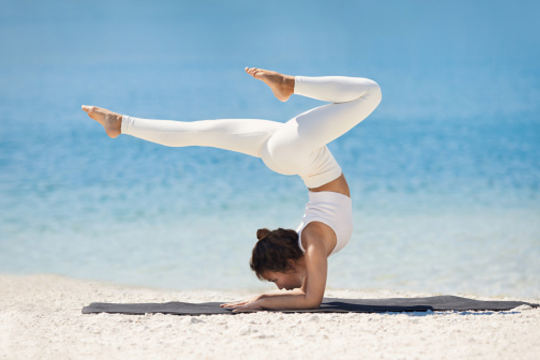In the world of fitness, flexibility and mobility are often overlooked in favor of strength and endurance training. However, as we age, these elements become increasingly vital to maintaining overall physical health, preventing injury, and enhancing our ability to move with ease. Incorporating activities that focus on flexibility and mobility, such as yoga, stretching, and Pilates, can transform your fitness routine, leading to long-term benefits that extend beyond the gym.
Why Flexibility and Mobility Matter
Flexibility refers to the range of motion in your muscles and joints, while mobility involves the control and coordination of those movements. Together, they form the foundation of functional movement—allowing you to perform daily tasks, engage in physical activity, and recover from exercise without discomfort or injury.
As we age, our muscles naturally lose elasticity, and our joints become stiffer, leading to reduced mobility. Without adequate flexibility, even simple movements like bending, reaching, or walking can become challenging. By prioritizing flexibility and mobility training, you can combat these natural declines and maintain a higher quality of life.
Benefits of Flexibility and Mobility Training
- Injury Prevention One of the most significant benefits of flexibility and mobility training is injury prevention. Tight muscles and stiff joints increase the risk of strains, sprains, and other injuries, particularly during physical activity. Regular stretching and mobility exercises help keep your muscles and joints limber, reducing the likelihood of injury both in and out of the gym.
- Improved Posture Poor posture can lead to chronic pain, particularly in the neck, shoulders, and lower back. Activities like yoga and Pilates emphasize body alignment and core strength, which help improve posture and reduce tension in areas prone to tightness.
- Enhanced Physical Performance Whether you’re a seasoned athlete or just starting your fitness journey, flexibility and mobility training can boost your overall performance. Increased range of motion allows for more efficient, controlled movements, which translates to better results in strength training, cardio workouts, and everyday activities.
- Faster Recovery Stretching and mobility exercises promote blood flow to the muscles, aiding in recovery after workouts. This helps reduce soreness and stiffness, allowing you to stay consistent with your exercise routine.
- Support for Aging As we age, maintaining flexibility and mobility becomes critical for preserving independence and preventing falls or other injuries. By incorporating these exercises into your routine, you’ll stay agile, improve balance, and continue to move with confidence as you get older.
Yoga, Stretching, and Pilates: Your Flexibility Toolkit
- Yoga Yoga is one of the most effective practices for improving flexibility and mobility. The combination of stretching, strength-building, and breath control in yoga not only enhances physical well-being but also calms the mind, promoting relaxation and stress relief. Yoga poses target different muscle groups, lengthening tight areas and increasing range of motion over time.
- Stretching Regular stretching—whether dynamic before a workout or static afterward—plays a crucial role in keeping muscles pliable and reducing stiffness. Stretching exercises can be tailored to your specific needs, focusing on areas that are prone to tightness or discomfort.
- Pilates Pilates focuses on core strength, posture, and controlled movements, making it an excellent option for improving mobility and stability. Many Pilates exercises also emphasize spinal alignment, which is key for maintaining good posture and preventing back pain. Pilates movements are gentle yet effective, making it a great option for people of all fitness levels.
Incorporating Flexibility and Mobility Into Your Routine
- Warm-Up and Cool-Down: Always include dynamic stretches before your workout and static stretches afterward. This helps prepare your muscles for activity and aids in recovery.
- Daily Practice: Set aside a few minutes each day to perform flexibility and mobility exercises. Consistency is key to seeing long-term benefits, and it doesn’t take much time to make a significant impact.
- Try a Class: If you’re new to flexibility training, consider joining a yoga or Pilates class. Instructors can guide you through proper techniques and help you get the most out of each movement.
Conclusion: Move Better, Live Better
Focusing on flexibility and mobility isn’t just for athletes or fitness enthusiasts—it’s essential for everyone, particularly as we age. By incorporating yoga, stretching, and Pilates into your routine, you’ll enhance your physical well-being, reduce the risk of injury, and enjoy a more active, pain-free life.
Make flexibility and mobility a priority in your fitness routine, and you’ll reap the rewards of greater freedom of movement, improved posture, and a stronger, more resilient body. It’s never too late to start moving better and living better!


